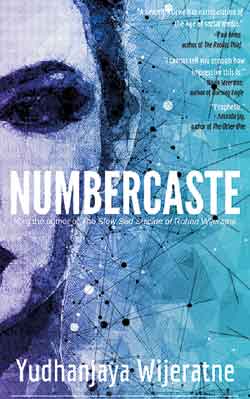Efflorescence of South Asian Sci-Fi?
View(s): I have long been a reader of science fiction not just for entertainment, but also for insights useful for my research and teaching. After all, the very word cyberspace was coined by William Gibson, a luminary of the cyberpunk sub-genre. I like all forms of sci-fi, but find near-future science fiction the most illuminating. So I not only read, but recommend.
I have long been a reader of science fiction not just for entertainment, but also for insights useful for my research and teaching. After all, the very word cyberspace was coined by William Gibson, a luminary of the cyberpunk sub-genre. I like all forms of sci-fi, but find near-future science fiction the most illuminating. So I not only read, but recommend.A friend teaching about social aspects of ICTs once explained she had trouble following my reading recommendations: the plots were mostly formulaic quests, she said. The characters were two-dimensional and not fully developed. She was implying it was a male genre; Zane Gray and Rider Haggard reworked.
I recall trying to defend Gibson and Bruce Sterling whose protagonists were nowhere near two dimensional, and were female to boot. But most of the plots were quests. Not all, I still contend.
My friend should have no difficulty with Numbercaste, where nothing is the subject of a quest, except perhaps a moral compass or two. She should find it of value in helping her LSE students understand some of the critical current issues being posed by social media, “fake news” and algorithm-based decision making. And all in the context of a well-crafted, near-future sci-fi novel.
About the characters, they are male, for the most part. The author breaks from the trend, at least among the sci-fi writers I read, of creating edgy female protagonists, wisely. The advice that one should write what one knows appears to have been taken. The principal characters, including the diffident narrator, are conflicted human beings settling accounts with father figures. They are worth getting to know. They help us work through some of the moral choices we ourselves face.
Near-future science fiction is about extrapolation. Good near-future writing gives us fresh insights on what’s happening in our world or what’s on the horizon. One could think of Numbercaste as an extended cogitation on the social-credit system being implemented in China. But it is much more.
It is a contemplation on the age-old problem of how people are classified into various groups and treated differently, as in the case of caste. Caste is a subject a South Asian author has an obvious advantage in, not just the original form based on birth but also the modern mutations based on “colleges” attended, doctor versus nurse, engineer versus technical officer, and so on.
South Asia has in recent decades produced an enormous amount of creative writing. But not much sci-fi. And little with South Asian characteristics. Amitav Ghosh’s award-winning Calcutta Chromosome is a notable exception. Jumping as it does between the past and the future to weave a narrative of an alternative science, it’s a difficult book to categorize. Is it about our future or about a road not taken in the past?
In Yudhanjaya Wijeratne we may have the beginnings of a truly South Asian science fiction, not limited to the quaint and the exotic. His writing self-confidently engages with the reality of people whose roots are here, but whose imaginations, ambitions and domains are not limited by geography, and the globe-straddling corporations they create or shape.
The true test of a writer (other than perhaps J.D. Salinger) is the second novel. We eagerly await Wijeratne’s.
| Book facts | |
| Numbercaste by Yudhanjaya Wijeratne. Reviewed by Rohan Samarajiva |


